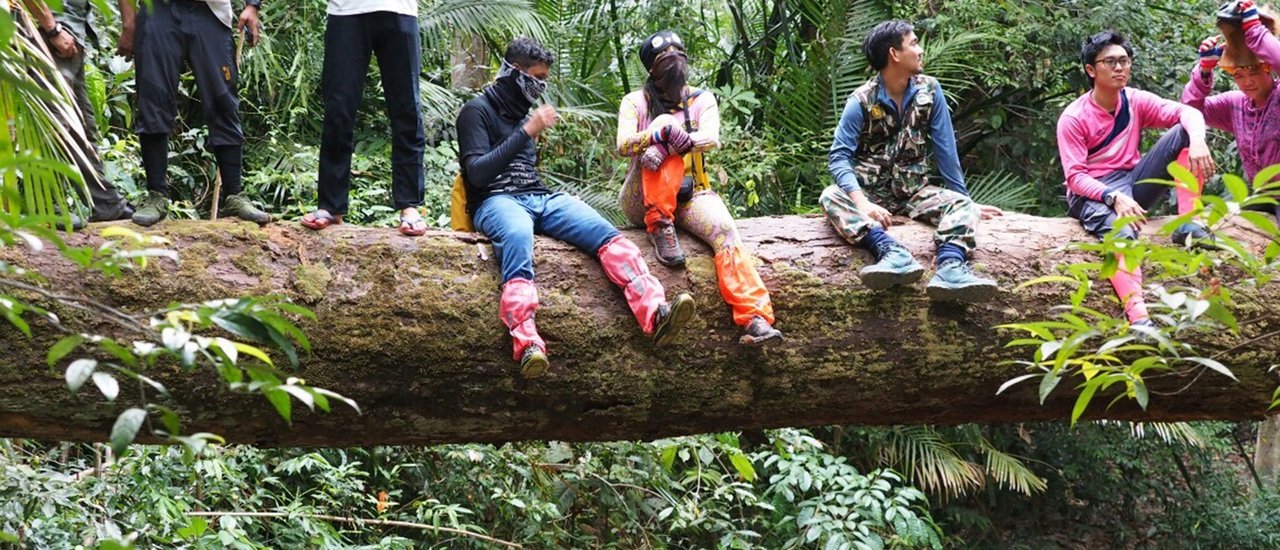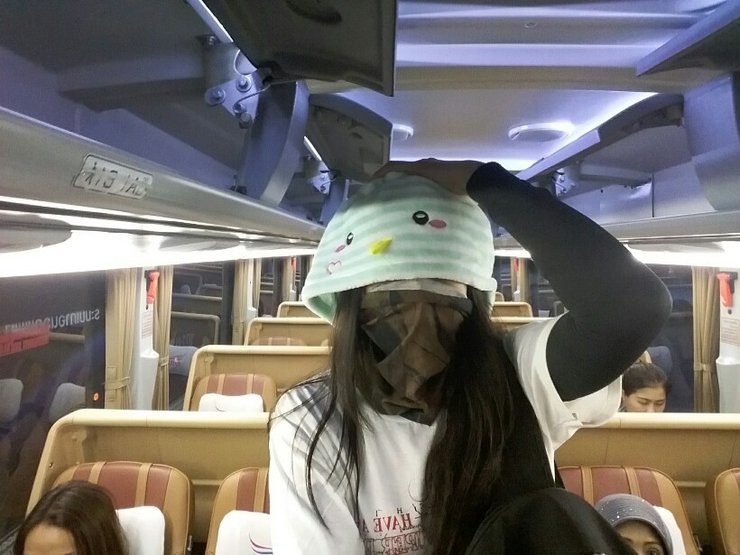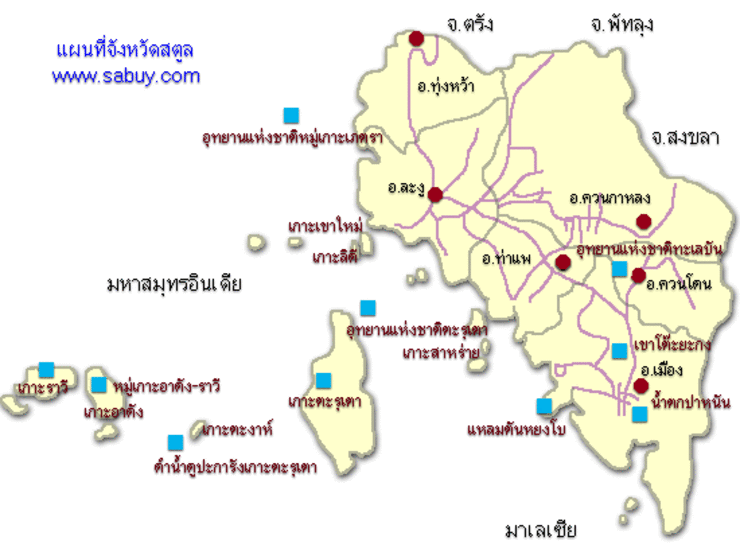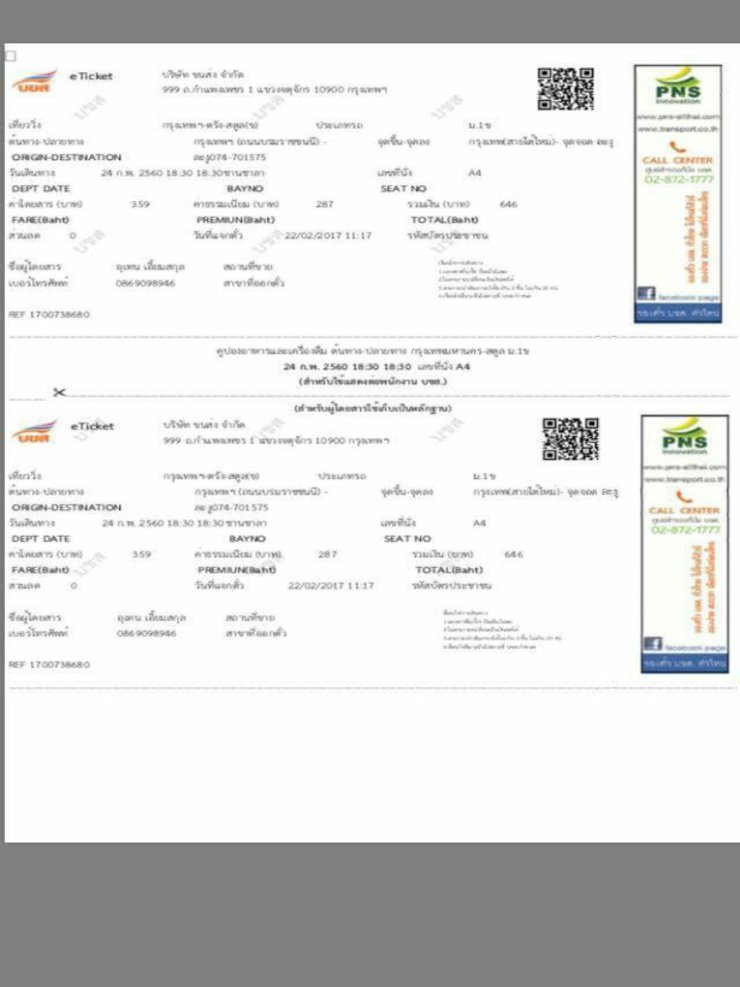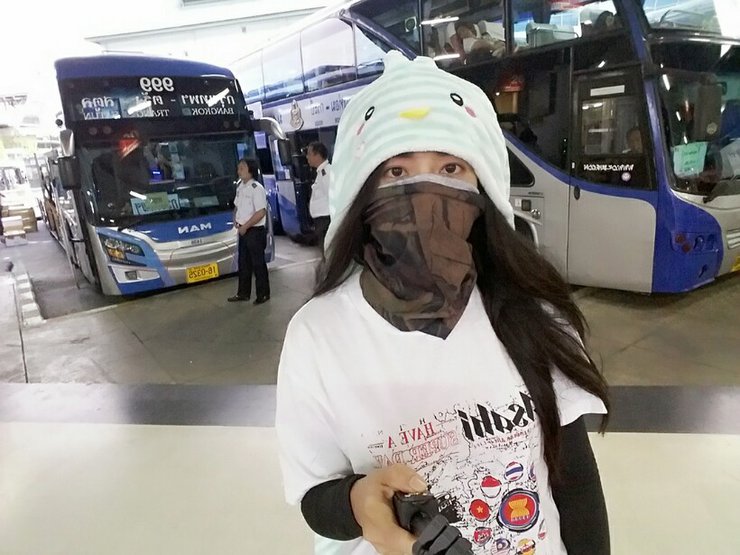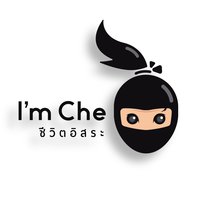



Upon receiving an invitation from Uncle Rune to go hiking in Satun on February 25-26, 2016, I immediately began researching the area. Wow!
The information is no longer available because Uncle Rune told us that we would be the first group to enter the forest. The area is expected to be humid and leech-infested. We will be heading towards the back of the waterfall, where the view is beautiful. We will camp by the stream, fish, and hike about 8 kilometers. There will be 4-5 porters accompanying us.
This trip had a total of 10 members who went hiking in Satun. They were: Che, Max, Sam, Goong, Tan, Thun, Non, Namo, Songgrig, and Uncle Rune (Satun). The cost of the hike was 1,000 baht per person, not including travel expenses. (If you are interested in hiking here, please contact Bang Mad at 084-8465480). The service was excellent. We just had to carry our backpacks and personal belongings. All meals were provided.
Folk photographers Kamponsak Sassadee, Danet Bamrungtanakit, and IamChe

The decision to embark on this hiking expedition was made impulsively after a brief conversation with Uncle Rune. With his approval, we assembled a team and set off without further ado. I recruited friends to join the trek, and after finalizing the itinerary and securing participants, we dispersed to pursue our individual pursuits until the impending departure date. It was only in the days leading up to the trip that I found the time to research our destination, and to my surprise, I discovered that the province of Satun was considerably farther than I had anticipated.
Satun Province is located in the southernmost part of the western side of southern Thailand, on the shores of the Andaman Sea. It borders Malaysia.
The mountainous terrain of Satun province
The northern and eastern regions of Satun province are characterized by a complex landscape of mountains. The prominent Nakhon Si Thammarat mountain range stretches from the north to the Sankalakhiri mountain range, causing the province's terrain to slope westward and southward towards the Andaman Sea. A narrow plain runs parallel to the coastline, accompanied by mangrove forests along the shores. Satun lacks major rivers, with only short streams originating from the northern and eastern mountain ranges.
The mountains in Satun province are part of the Nakhon Si Thammarat and Sankalakhiri mountain ranges. The most significant mountains are as follows:
1. Khao Wang Man, Khao Pho
2. Khao Chin, also known as Bukit Cina, is the highest mountain in Satun province, with a peak elevation of approximately 740 meters. It forms part of a long mountain range connected to several other mountains.
3. Khao Wang Phraeneaid
____________________________________
4. Khao Kamin is located in Khuan Kalong and Khuan Don Districts, stretching from Thung Nui Subdistrict, Khuan Kalong District, southward to connect with the Chin Hills in Khuan Sto Subdistrict, Khuan Don District. The peak is approximately 650 meters high and is the source of several rivers. (This is the mountain we will be visiting.)
5. Khao Khom, Khao Daeng
6. Khao Priang Khao Daeng


The journey began on the evening of February 24, 2017, by air-conditioned bus. The return trip was made using the Nok Air airline.


6:30 p.m. The bus departed from the Southern Bus Terminal. When I inquired about the arrival time in Lamphun, the driver informed me that it would be 9:00 a.m. Oh my goodness!
Nunt took the earlier bus at 5:00 PM. As for our group of three, Max, Che, and Tan, we had a bit of a mishap. We thought we were supposed to board the bus at the old Southern Bus Terminal, and we only had 2 minutes to spare before departure. What a crazy situation!



The 99 bkk - langu bus costs 646 baht. The bus is very good, with electric massage seats and a USB charging port on the left side.

The long journey is finally over. Uncle Rune said that if we reach Thung Wa, we should call him and he will pick us up.


At 9:30 AM, we arrived at the snake farm. Uncle Rune came out to greet us at the parking lot. Sam and Non, who had arrived earlier, also came out to welcome us.


We arrived at Uncle Rune's house in Lango (where Uncle Rune runs a restaurant) around 9:50 AM. We had breakfast, changed our clothes, and continued our journey.


10:30 AM: Departed from Uncle Rune's house in Lang Su district to Thung Nui district, covering a distance of 53.0 km via the Lang Su Rural Road 416 and Highway 4137.

11:50 AM. The car was parked at the Ban Ton Pa Nan Tourism Group, where Deputy Governor Montchai was waiting to welcome them.


12:20 p.m. Departed from the Ban Ton Pa Nan tourism group by pickup truck to the starting point of the trail. The trail begins at the four-way intersection above Ton Pa Nan Waterfall.


The initial section of the trail is narrow and features a gradual incline. After a moderate climb, the path descends into a valley where you can observe giant trees.


The trail ascends through lush greenery, with a constant water source even during the dry season.


In the picture below, my guide, Maad, shows me several types of medicinal herbs. He calls this one "mawaeng," which has a fragrant smell.


The area boasts a significant number of large trees, with evidence of past logging activities through the presence of tree stumps. This suggests that the area was once subject to logging concessions.


Leeches have been spotted.


Take a break when you're out of breath.



They were eating snacks and watching a video. The video showed a dog named Yeaw Yeaw calling out to them to eat watermelon. They were excited, thinking it was real watermelon.
In the next scene, Sam is enjoying the fried bananas that Bang Hmad brought for him to try.
The final image depicts a local snack made from savory dough. The specific name of the snack is unfortunately not provided.


The advantage of trekking in the south is that there is water all year round. The forest is humid, and the trees are diverse and intertwined.


Exiting the forest, we cut through the villagers' orchard.

Orchard


Continuing on, you will reach the white clay clearing.
Kaolin (kaolinite) is a white clay mineral that resembles clay in texture. When wet, it becomes sticky like clay and is a component of clay and shale. It is formed by the weathering of certain rocks, such as granite, rhyolite, and feldspar-rich sandstone. Pure kaolin is white, but it is often mixed with other substances, giving it a yellowish color. Kaolin can also be found in brown, green, or blue colors.
White clay is used in the ceramic industry to produce beautiful pottery, tableware, sanitary ware, and unique patterned mosaic tiles that rival those produced abroad. It is also used in the chemical industry to make paint, cosmetics, insecticides, and refractory materials.


After passing Khuan Din Khao, we arrived at a rubber plantation owned by villagers. Director Nonn demonstrated how to tap rubber.


After passing the rubber plantation, we arrived at Khlong Ton, where two streams converge. We walked upstream along the right bank of the stream.


The atmosphere is very good. Stop by to relax and enjoy nature.


While walking beside the first canal, I slipped and fell into the water, getting completely soaked. Fortunately, I didn't hit my head.


After crossing the canal, we cut into the forest. However, on the right-hand side, there were waterfalls that we could see continuously. Unable to resist, we veered off the path and climbed over rocks to take pictures.


Back on track, but still need to cross the stream.


Enjoying the walk because the scenery on both sides of the road is beautiful.


After crossing the stream, you will see a large number of plants from the areca and palm families. It's beautiful.


The dog is sniffing the herbs.
The image above depicts the root of the "Pla-Khai-เผือก" plant. This root has a slightly bitter and cooling taste. It is used to expel various toxins, including those from boils, fevers, phlegm, and blood. It is also used to treat fevers of all kinds, wind, and tuberculosis in its swollen stage.
The white eel is a plant with medicinal properties. Its roots are used to detoxify the body, including from fevers, phlegm, and blood poisoning. It is also used to treat malaria, reduce fevers of all kinds, relieve wind, treat tuberculosis during the swelling stage, induce sweating, expel parasites, treat tonsillitis, sore throat, high blood pressure, paralysis, and promote lymphatic drainage. It can also relieve constipation.
Used as an ingredient in invigorating tonic.
The lower picture shows a single flower found in the southern forests. Its stem can be used to make toothpaste by rubbing it on the teeth. The root can be pickled in white liquor to relieve aches and pains.


Image on
"Khana kom" (a local name for Chinese kale, named after the time when the People's Party of Thailand used to collect and eat this vegetable) is delicious when eaten with chili paste or stir-fried.
Vernacular names or other names: Hu Mi, Wild Kale, Samathamo, Old Woman's Rainbow, Budu Bulang
**Botanical characteristics:** Bear's ear leaves are a type of wild vegetable with fleshy leaves and stems. Currently, they are not very common and are found in forests with high fertility and humidity, which is an indicator of the richness of the area. They are mostly found in areas with slopes and high fertility.
Culinary uses: Young shoots or flowers are commonly used in cooking, with a flavor similar to kale.
Medicinal properties: Treats prostatitis and promotes urination.


15:00 Arrival at Ton Ton Waterfall, lunch break.


We are very hungry. We have stir-fried chicken with curry paste, chili paste, omelet, and Chinese kale.


The area around the waterfall has leeches.


Eat, play in the water, take a nap, and then continue the journey.
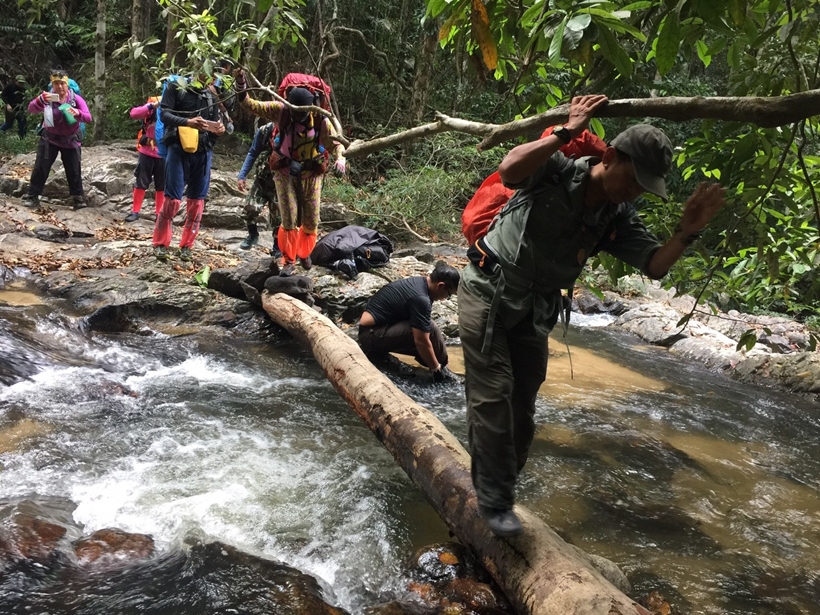

The name of the waterfall comes from the abundance of "ต้นหว้า" trees in the area.


It's enjoyable to walk around and look at things.


The bamboo plant is very large.


Pacing back and forth.


The person in front said we are almost there.


Before reaching the campsite, you must cross the logs.


The accommodation is located on an island in the middle of a stream.



Upon arrival, they set up hammocks, pitched tents, hung laundry, and bathed.


The water is very clear, making it fun to run and play in.


Brother Bang Mad cooked rice for us to eat in a bamboo tube. The rice was wrapped in banana leaves. We secretly watched him cook. We will try to learn how to do it too.


Traditional Water Filtration Methods
The picture below shows a toothbrush made from a single "Chompoo Dok Diew" flower, which was crafted by Brother Bang Lee for Director Non and Che.


While the rice was cooking, I overheard the guide talking about going fishing. I couldn't resist and joined in the conversation.


Along the way, I encountered turtles, frogs, and fish. The walk was quite long, and Che was only able to walk a little over a kilometer before having to turn back due to a rock that pierced his foot. Seeing the older students walking barefoot, I decided to follow suit. I wish I hadn't, as the walk was incredibly painful due to the sharp rocks scattered along the path.


We can have dinner at 11 pm.


Listen to the story from Uncle Rune.

During prayer times, it is important to refrain from making noise to avoid disturbing those who are praying.



Around midnight, the older students told us not to sleep yet because they were going to make us a snack called "Khao Khao." Khao Khao is made from dough and filled with coconut sugar. Some of the students, including the headmaster, planned to prank the others by adding chili peppers and a single flower to the filling. When they ate it, they screamed when they found the chili peppers.


The day began with a beautiful view and an unusual breakfast of sticky rice sprinkled with grated coconut. Interestingly, Principal Nont was not seen grating coconut this morning.


After a satisfying meal, we sat down to enjoy coffee while listening to stories from the forest. The tales were captivating and provided new insights, making it a truly enriching experience.


They packed their belongings and set off on their return journey, taking a different route than the one they had taken on their arrival.


The atmosphere is beautiful.


They had fun along the way, walking and talking until they exited the forest.


Emerging from the forest, I hastily removed my shoes to check for wounds, tears welling up in my eyes.


After everyone arrived, we took a car back. Upon arrival, there was food waiting to welcome us. It was really good.


After finishing his meal, he cried for his older brother to take him to beat the bees. Beating bees requires special skills and should not be imitated. Only six people in the village know how to do it.


As soon as the smoke started to fill the room, we all ran for our lives, leaving Director Nont standing there alone, looking cool as a cucumber.

Really annoying.



They had their fill of honey and then went to visit Fluke's house before going their separate ways.

This trip would not have been possible without all of you who came to have fun together. We traveled a long way and spent a lot of money, but it was all worth it for the experiences we had. It was a pleasure meeting you all.


Thank you for taking care of me.
I'm Che
Friday, October 4, 2024 3:19 PM

